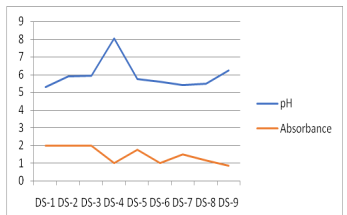Extraction and Analysis of Chemical Constituents of Natural Dyes for Dying Several Fabric Texture
Keywords:
Natural dyes, Synthetic dyes, MordantsAbstract
History of dyes is several decades old among all over the world. Natural dyes have been widely used for cotton fabric. Natural resources like plants, insects, and minerals are used to make natural dyes. Most natural dyes are vegetable or plant dyes, which are obtained from plants such as roots, berries, bark, leaves, fruits, wood, etc. The two different sorts of dyes are synthetic and natural. Organic compounds that are also referred to as "coal tar dyes" make synthetic dyes. As these dyes are sourced from plant that were discussed previously. Natural dyes are being used, which is a potential advancement in this approach. Natural dyes use a simple extraction technique to replace costly chemical production methods and lower the high cost of metal complex receptors. Natural dyes are easily extracted, widely accessible, and are harmless for the environment. To increase the sustainability of dyes, mordants are used. Mordants are inorganic salts used for pre-treating dyes. These are taken up by the fibres, where they interact with the dye to create a less soluble version. a description of plant-based natural colourants, their classification, the chemical elements involved for producing the various hues, their actions, and the impact of various mordants on the hue are covered in this backdrop. The various kinds of mordants used to fix natural coloration on textile substrates, their actions, and plant sources are also covered. This paper shows how natural dyes are obtained and chemical composition they contain. How dyes are bound with the fabric, and what chemical changes occur while dyeing. To examine the physical and chemical characteristics of the materials under study, numerous experiments were conducted viz. pH measurement, absorbance, qualitative analysis etc. and result so obtained were discussed in full article.
References
K. Prabhu, A. Bhute, “Plant based natural dyes and mordants, A Review”, Journal of Natural Product and Plant Resources Vol.2, Issue.6, pp.649-664, 2012.
A. Kumar, T. Perapong , B. Gupta, “Natural dyes for dye sensitized solar cell: A review”, Renewable and Sustainable Energy Reviews, Available online 25 November 2016.
H. Zollinger, ‘Color Chemistry: Syntheses, Properties, and Applications of Organic Dyes and Pigments”, John Wiley & Sons, 2003.
H. Ali, “Biodegradation of synthetic dyes—a review", Water, Air, & Soil Pollution 213, pp.251-273, 2010.
H. Ben Slama, Ali ChenariBouket, Zeinab Pourhassan, Faizah N Alenezi, AllaouaSilini, Hafsa Cherif-Silini, Tomasz Oszako, LenkaLuptakova, Patrycja Goli?ska, LassaadBelbahri “Diversity of synthetic dyes from textile industries, discharge impacts and treatment methods” ,Applied Sciences 11 (14), 6255, 2021.
N. Joshi & V. Marmat “Investigation of Active Chemical Bulk Present in Solution of Beetroot Juice and Rose water Spectrophotometrically”, ‘International Journal of Scientific Research in Chemical Sciences’ April, Vol.10, Issue.2, pp.25-28, 2023.
K. Venkatraman, ‘The Chemistry of Synthetic Dyes’ “Elsevier”,E-book, revised edition 2012.
M. Gra¨tzel Dye-sensitized solar cells. Journal of Photochemistry and Photobiology C: Photochemistry Reviews (4), pp.145–153, 2003.
A. M. Mahmoud Al-alwani abu; “dye-sensitized solar cells: development, structure, operation principles, electron kinetics, characterisation, synthesis materials and natural photosensitisers”, renewable and sustainable energy reviews, November, Vol.65, pp.183-213, 2016.
B.H. Patel, Natural Dyes, “Handbook of Natural Dyes”:’Science Direct’, Vol.1, pp.395-424, 2011.
Padma S Vankar, “Chemistry of natural dyes”. ‘Resonance -5’: Vol.10, pp.73-80, 2000.
K. Bernhard "Breakdown of Chlorophyll in Higher Plants—Phyllobilins as Abundan Yet Hardly Visible Signs of Ripening, Senescence, and Cell Death". ‘Angew. Chem. Int. Ed’. 4882,55, pp -4907,26, 2016. . doi:10.1002/anie.201508928.

Downloads
Published
How to Cite
Issue
Section
License

This work is licensed under a Creative Commons Attribution 4.0 International License.
Authors contributing to this journal agree to publish their articles under the Creative Commons Attribution 4.0 International License, allowing third parties to share their work (copy, distribute, transmit) and to adapt it, under the condition that the authors are given credit and that in the event of reuse or distribution, the terms of this license are made clear.





